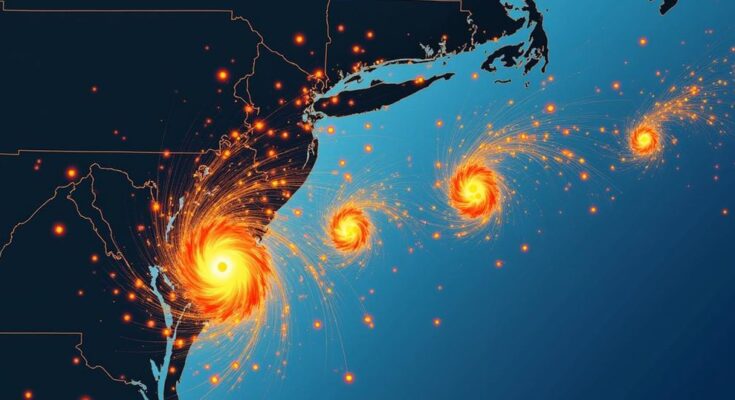The article examines the aftermath of Hurricane Helene and its impact on the Southeastern United States, particularly focusing on the resultant flash floods in Virginia and North Carolina. Majid Shafiee-Jood explains the mechanics of hurricanes and their flooding potential, as well as the establishment of a database for hurricane evacuation orders to assess their efficacy during such crises.
Hurricanes, particularly those that form in the Gulf of Mexico, can have extensive impacts extending far beyond their landfall locations. Following Hurricane Helene, regions across the Southeastern United States, including parts of Georgia, the Carolinas, and Virginia, faced widespread devastation. This included closed roads, power outages, and severe flooding in mountainous towns. Majid Shafiee-Jood, a research assistant professor of civil and environmental engineering at the University of Virginia, provides insights into the factors that lead to such events. Hurricanes are characterized by rapid rotation and possess substantial moisture; they can unleash heavy rainfall that results in flash flooding. Flash floods differ from coastal flooding caused by storm surges; they typically occur when a significant amount of rainfall accumulates in a short period, leading to unexpected inundation, especially in urban areas where water cannot easily penetrate the ground. In regions with mountainous terrain, saturated soils can exacerbate the situation, triggering mudslides and landslides. While these occurrences may seem alarming, they are not unusual. Shafiee-Jood recalls similar events following Hurricane Michael in 2018, when parts of the Florida panhandle experienced heavy rains that affected northern regions. To enhance understanding of how evacuation decisions are made during hazardous weather scenarios, Shafiee-Jood, alongside colleagues, established the first hurricane evacuation order database. This database records the history, timing, and specific areas affected by evacuation orders to evaluate their effectiveness. For instance, Hurricane Helene prompted preemptive evacuation orders in Florida, highlighting the urgency of timely communication in crises. By examining how people respond to such warnings, researchers aim to improve future emergency management strategies and enhance public safety regarding hurricane-related incidents.
This article discusses the relationship between hurricanes forming in the Gulf of Mexico and their subsequent impact on areas like Virginia and North Carolina. Hurricane Helene provides a recent case study, illustrating how heavy rainfall from a hurricane can lead to flash floods, particularly in urban and mountainous regions. Expert Majid Shafiee-Jood emphasizes the importance of understanding emergency protocols and the effectiveness of evacuation orders through research and data collection.
In summary, hurricanes can trigger significant secondary weather events such as flash floods, particularly in areas far from their initial landfall. The research conducted by Shafiee-Jood and his colleagues contributes to understanding how evacuation orders can be improved to better protect affected populations. Recognizing the dynamics of flash floods and the timely issuance of warnings is crucial for effective disaster response and community safety in future hurricane events.
Original Source: news.virginia.edu




